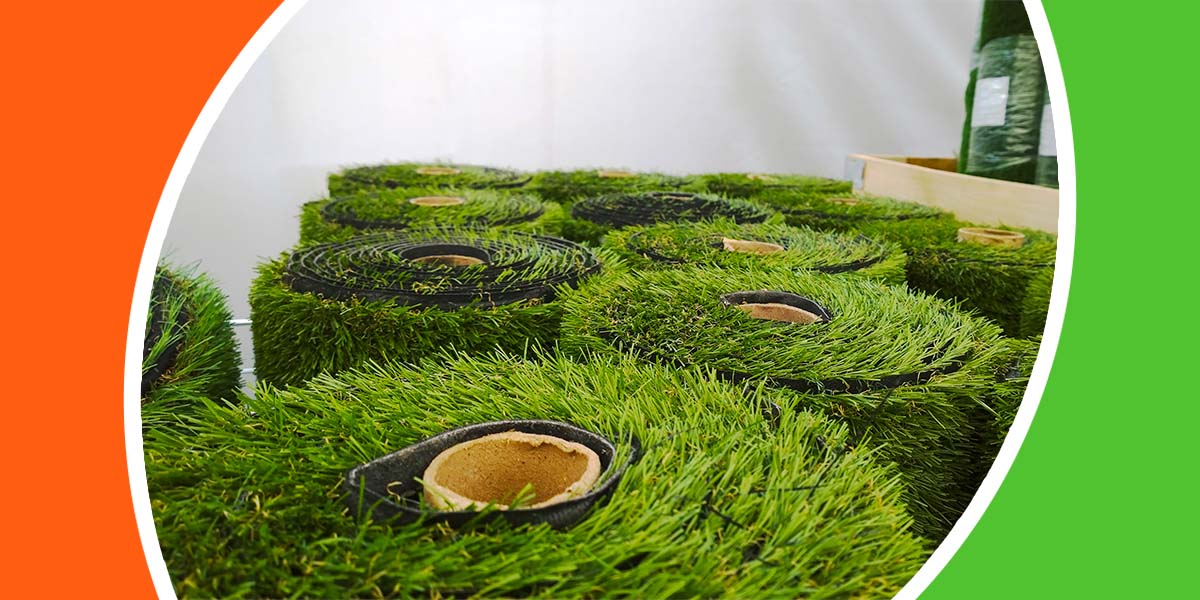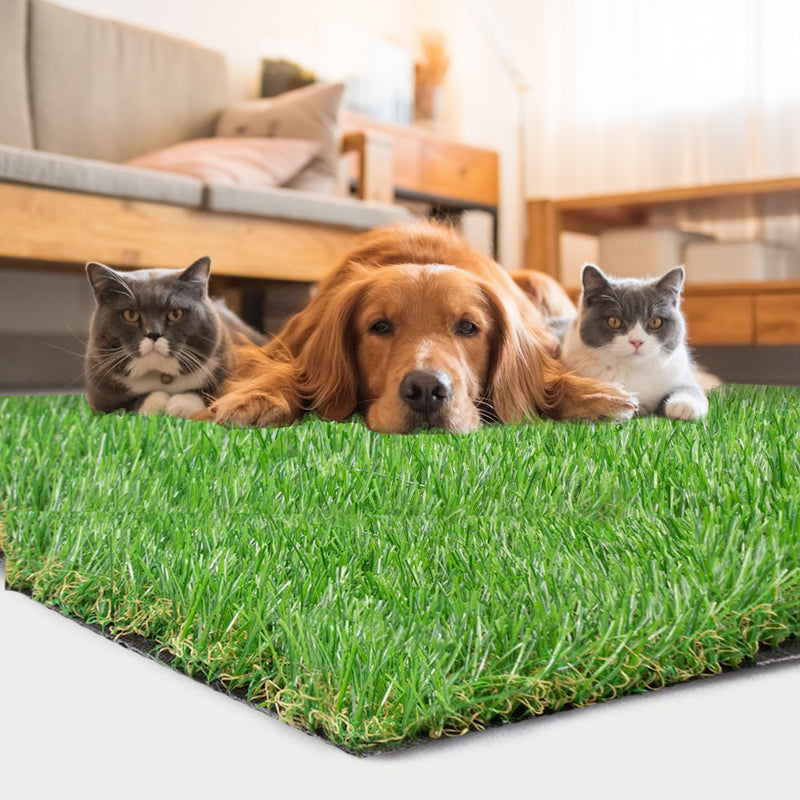Well-Known Phoenix Turf Companies Offering Best Synthetic Grass Installation
Well-Known Phoenix Turf Companies Offering Best Synthetic Grass Installation
Blog Article
Explore the Environmental Advantages of Opting for Synthetic Grass Solutions
The adoption of artificial turf solutions offers a compelling opportunity to resolve pressing ecological difficulties. By considerably reducing water use and decreasing the application of unsafe chemicals, these choices not only promote lasting landscaping but also secure neighborhood communities. Moreover, the lower carbon impact connected with decreased upkeep tasks adds to an extra sustainable approach to land monitoring. Nonetheless, the ramifications of these advantages extend past simple preservation efforts, questioning concerning their long-lasting influence on habitat preservation and overall eco-friendly balance. Discovering these dimensions exposes an intricate interplay worth thinking about.
Water Conservation Advantages
One of the most considerable advantages of synthetic turf is its capacity to conserve water. In contrast, fabricated lawn does not need watering, significantly minimizing the general demand for water sources.
By removing the requirement for regular watering, synthetic grass adds to lasting landscape methods and aids reduce the ecological impact of too much water consumption. The conservation of water expands to the reduction of drainage, which can lead to soil disintegration and river air pollution.
Furthermore, the installment of fabricated grass permits towns and home owners to designate water resources a lot more effectively, concentrating on necessary uses such as drinking water and agriculture. The shift in the direction of synthetic grass not just advertises responsible water usage yet additionally lines up with wider ecological goals intended at maintaining natural deposits.
As neighborhoods significantly focus on sustainability, the water preservation benefits of fabricated turf provide an engaging situation for its fostering in property and business landscaping projects.
Lowered Chemical Use
The transition to synthetic grass considerably decreases the reliance on chemical treatments commonly used in all-natural grass maintenance. Conventional lawn administration commonly entails the application of chemicals, herbicides, and fertilizers to promote growth and control bugs. These chemicals can present dangers to human health, local wildlife, and the atmosphere, contributing to dirt and water contamination.
In comparison, synthetic grass removes the demand for these dangerous compounds. When mounted, it needs minimal maintenance, mostly containing normal cleaning and infrequent infill replenishment. This decrease in chemical usage not only profits the instant environment yet also adds to broader eco-friendly stability. By minimizing the release of synthetic substances into the environment, fabricated lawn promotes much healthier soil and water supply.
Furthermore, the absence of chemical drainage associated with artificial lawn installments assists shield regional rivers from pollution, sustaining marine life and maintaining biodiversity. Arizona artificial turf. As communities progressively focus on sustainable practices, choosing fabricated turf provides a viable remedy that aligns with environmental conservation goals. With this change, residential property proprietors can enjoy lavish eco-friendly areas without endangering eco-friendly health, leading the way for a much more sustainable future
Reduced Carbon Impact

Furthermore, the installation of artificial lawn can cause substantial water conservation. Natural lawns need substantial quantities of water for watering, which not just includes to the carbon footprint connected with water removal and therapy however likewise strains regional water sources. In comparison, synthetic grass requires marginal upkeep, calling the original source for no watering, therefore dramatically decreasing water usage and its associated energy costs.
Additionally, the durability of synthetic grass adds to its decreased carbon impact. With a lifespan of approximately 15 years or even more, the requirement for regular replacements is decreased, leading to much less waste and reduced power intake in production and getting rid of conventional grass alternatives. In general, synthetic turf offers a lasting option for environmentally conscious landscape design.
Habitat Preservation
Environment conservation is a crucial consideration in the dispute over landscaping options, particularly when contrasting fabricated grass to all-natural lawn. All-natural lawn lawns often need substantial maintenance, consisting of the use of herbicides, plant foods, and pesticides, which can detrimentally affect local ecosystems. These chemicals can seep into the dirt and rivers, hurting native vegetation and fauna and click for more info interfering with local environments.
In comparison, artificial grass presents a chance to reduce the eco-friendly footprint of landscape design. By going with artificial turf, homeowners can reduce the disturbance of natural habitats connected with traditional yard treatment practices. Man-made turf eliminates the demand for unsafe chemicals, thus securing nearby wild animals and keeping the integrity of surrounding ecosystems. Furthermore, the installment of synthetic grass can result in the conversion of previous grass areas into more biodiverse landscapes, such as pollinator gardens or native plant locations, which can support local wildlife.
Eventually, the shift to synthetic grass not only conserves water and reduces upkeep initiatives yet likewise promotes a much more harmonious partnership in between human tasks and the natural surroundings, advertising habitat conservation at the same time.
Long-Term Sustainability
Lasting sustainability is a crucial factor in reviewing the advantages of synthetic grass over traditional yard lawns. Among the most substantial advantages of synthetic grass is its resilience; it can last up to 15-20 years with marginal maintenance, whereas all-natural turf calls for regular reseeding and replacement. This long life decreases the need for constant sources, such as water, fertilizers, and chemicals, which are necessary for maintaining a healthy grass yard.
Furthermore, synthetic grass contributes to a reduction in carbon exhausts related to grass care tools. Traditional grass typically call for gas-powered mowers, leaners, and blowers, all of which contribute to air pollution. Turf installation phoenix az. On the other hand, synthetic turf gets rid of the requirement for such devices, advertising a cleaner atmosphere
Moreover, the production of synthetic grass significantly uses recycled products, enhancing its sustainability profile. As suppliers adopt environmentally friendly techniques, the ecological footprint of synthetic lawn remains to reduce.

Conclusion
The adoption of fabricated grass solutions provides significant environmental benefits, including significant water conservation, lowered reliance on harmful chemicals, and a lower carbon impact. Additionally, synthetic grass help in maintaining all-natural environments by reducing land disturbance and advertising long-term sustainability with the usage of long lasting materials. Collectively, these aspects emphasize the potential of synthetic grass to add favorably to environmental health and wellness and supply a feasible alternative to standard landscape design practices in a progressively resource-conscious globe.
In contrast, synthetic lawn does not require watering, considerably decreasing the general need for water resources. By reducing the launch of artificial substances right pop over here into the ecosystem, man-made lawn advertises much healthier dirt and water systems.
Furthermore, the setup of fabricated lawn can result in significant water conservation. In comparison, artificial lawn requires very little upkeep, calling for no watering, thus considerably decreasing water use and its linked power prices.

Report this page